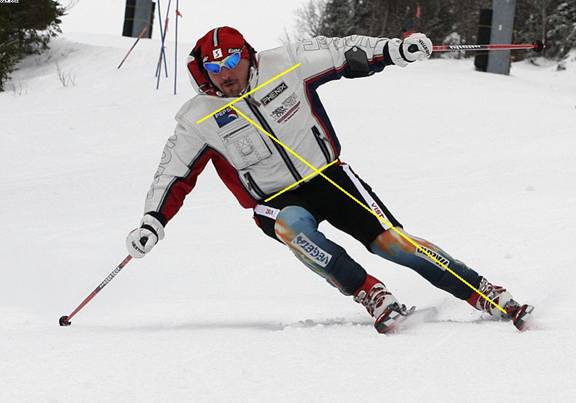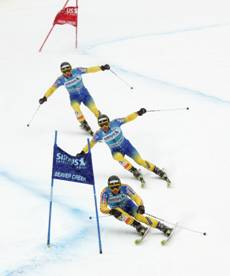
That's actually quite a lot of angulation in there.
You'd have to be going pretty fast to support that level of inclination.
The article says less angulation at the beginning of the turn. Inclination by extension. Frame 1.

It has more on angulation. Such as:
Angulation or “break at the hip” in the final phase of the turn is demonstrated here by (...see article...). Often considered an edging movement, angulation, in reality, just compliments inclination. It serves to maintain an edge grip when forces build up in the second part of a turn. Angulation cannot be performed effectively unless the initial edge angle is created by proper inclination.
I thought the article was more supportive of your point of view - incline 1st - than the 'angulate to edge but stay over the ski, then incline' pov.
HH seems to like tipping before extending.